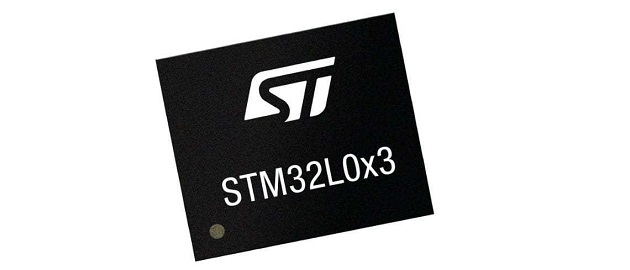The STM32L0 series is getting a new UFQFPN48 package measuring only 7 mm x 7 mm, thus making it the smallest member of the family with 48 pins. Going from the current LQFP48 package to the new one shrinks the PCB. Footprint by nearly half, which means that it opens the door to new applications that are particularly space-constrained but crucially hungry for all these pins. The new part also reflects our ability to offer greater integration without a single change to the die, thus making the new model software compatible with the larger LQFP48 model. The UFQFPN48 package is now available with up to 192 KB of Flash, 20 KB of SRAM, and 6 KB of EEPROM, thus providing a large offer well suited for application requiring many pins. Let’s now see the snowball effects that a smaller package can have on a final product.
UFQFPN48 and STM32L0: Smaller Size Means Bigger Savings and Simpler Design N48 package
This new part number is highly symbolic because it bypasses one of the significant challenges associated with shrinking a design. Traditionally, when engineers try to make a smaller PCB and want to use a smaller MCU, they have to adopt a BGA package with the pins at the bottom, which makes the layout a lot more complex and more expensive to manufacture. Indeed, the installation and soldering processes are trickier, thus making the final product more costly to produce. Thanks to the UFQFPN48 package, teams can shrink their design, benefit from the software compatibility to ease product development and keep the manufacturing costs down since the housing is a lot simpler to solder onto the board.
There is an increasing number of applications that require smaller packages and greater pins. From small earbuds to GPS trackers and many other consumer or industrial products, the popularity of sensor fusion applications creates a conundrum for designers. On the one hand, they need more pins to deal with all the sensors capturing information. On the other, they have to contend with smaller form factors. A UFQFPN48 package is thus an answer to this particular challenge as it still enables developers to use a magnetometer, an accelerometer, and a gyroscope, on top of analog sensors, for instance, while still enjoying a smaller PCB. Some of the newest STM32L0 using this new package even incline a USB interface and a driver for an LCD, thus substantially pushing what engineers can enjoy in a 7 mm x 7 mm package without necessarily using a BGA format.
STM32L0 and UFQFPN48: A Low Power MCU With Even Greater Integration and Straightforward Prototyping
The STM32L0 is famous for its ultra-low power consumption. For instance, the STOP mode with RAM retention and RTC running only demands 670 nA, meaning that it’s possible to rapidly wake up from it despite such a low energy requirement. However, engineers often overlook the fact that this series of microcontrollers also helps simplify designs and reduce bills of materials thanks to their many hardware integrations. The embedded multispeed internal (MSI) oscillator can provide a specific clock to the MCU, meaning that designers don’t need to add an external one to their design. It’s also possible to dynamically adjust the oscillator speed to the most energy-efficient configuration. We also offer true EEPROM within the STM32L0, whereas competing solutions may require external memory. A UFQFPN48 package builds on these features to enable even more straightforward and cheaper systems thanks to its software compatibility.
Developers looking to start writing their application can first grab one of our many STM32L0 boards, such as the 32L0538DISCOVERY, the NUCLEO-L073RZ, or STM32L073Z-EVAL, among others. Then to make their own PCB prototype, they can use STM32CubeMX to select and configure the right device among the 300 parts number of the STM32L0 Series. The result is a workflow that’s much more straightforward and the ability to use one development platform while obtaining results that should significantly reduce the need number of PCB versions necessary to obtain a final product. Developers can thus start optimizing their code for an STM32L0 in a UFQFPN48 package. The first devices will be available from distributors in the coming weeks.
For more information, visit www.st.com






